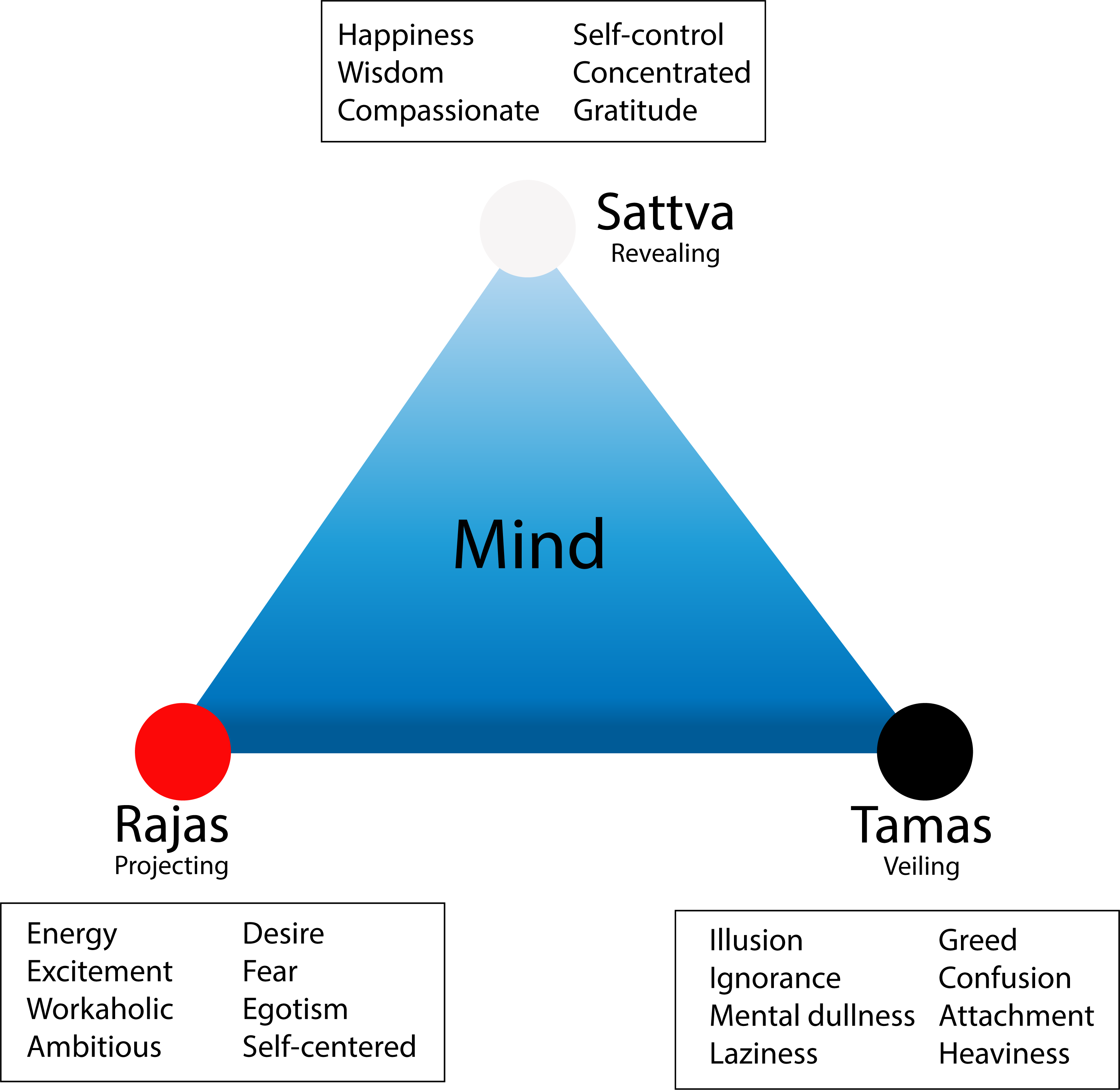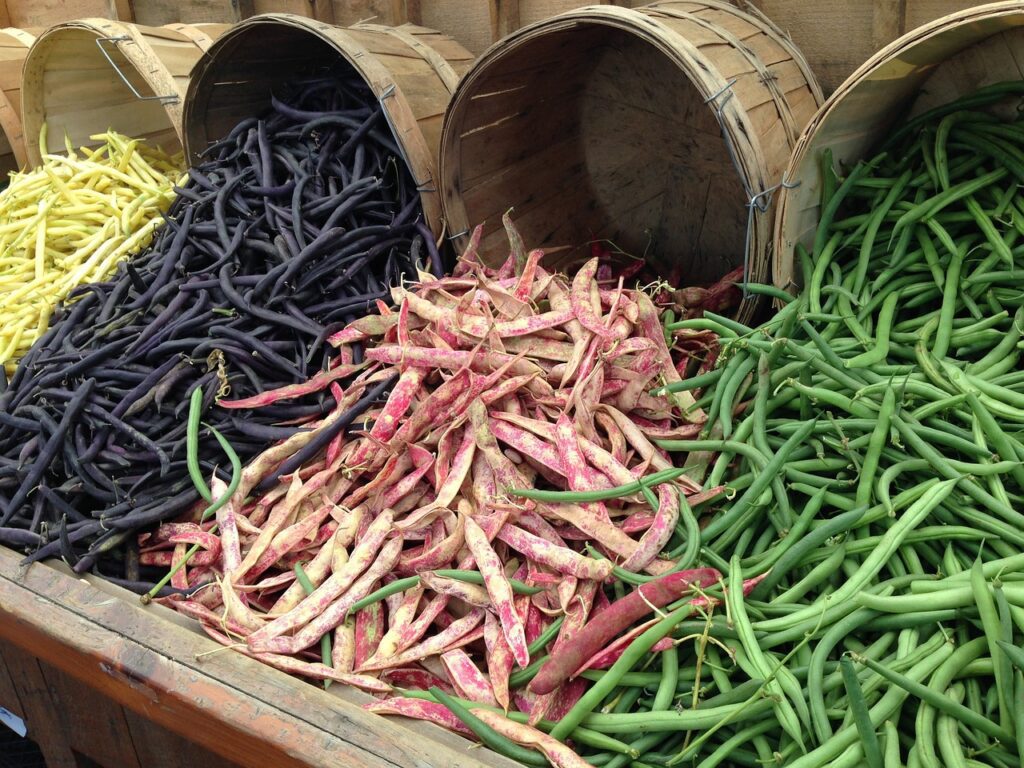
Legumes (lentils, peas, beans) are comprised mostly of the elements of earth and air. Sweet and astringent in taste, they are immediately cooling, then go on to nourish and strengthen.
While this is ideal in India’s hot, moist climate, beware however, too many legumes introduce rough, heavy, drying qualities that form gas and are hard to digest. Beans and lentils are high in fibre, but in excess or improperly prepared they cause constipation!
With air in their mix, legumes are naturally vāta-provoking, especially when dried or canned. Split mung dal (the small yellow lentil) is easiest to digest, and most suited to vāta dosha. In general, fresh beans are easier to digest, and sweet moist green beans harmonize vāta.
Most beans and lentils introduce rajas, an intrinsic quality that stimulates mental unrest. The mung bean is the only sattvic bean. When well-prepared, those with pitta and kapha constitution can enjoy legumes regularly—but begin slowly, and don’t overdo it.
A range of lentil varieties are used in dal (lentil curry), and can be mixed in the same dish. Legumes also combine well with sweet earthy vegetables, and grains. The marriage of lentils and rice in kitchari is a classic example.
Once dried, lentils, peas and beans hold their properties, and can be eaten year-round, though may be best-digested in winter.
Subscribe to my free email newsletter and receive bonus content…
Preparation
How different properties of Grains affects the Doshas.
Energetics: Sweet, astringent/neutral/pungent. PK↓V↑ (except mung and soy). All beans are rajasic-causing gas and irritate the body, mind, senses, and emotions- therefore are not recommended for yoga since they vitiate sattva by aggravating the mind. Mung beans and tofu are the only two exceptions. The mung bean is the only Sattvic bean.
Indications: Energy for strenuous work.
Element: Earth (protein) mostly, and air; heavy and dry therefore hard to digest.
Antidotes: Parboiling and removing water once or twice remove some irritant properties (for soy or kidney). Adding spices- onions, cumin, asafetida (hing), cayenne, and salt help, but in excess will aggravate pitta.
Nutrition: Proteins, iron B vitamins, trace minerals; as a crop, they nourish the soil instead of robbing it and absorb more than 100 pounds of nitrogen from the atmosphere yearly.
Combinations
It is better not to combine certain foods.
As a protein it combines well with grains for staple food, containing all the eight essential amino acids; especially split mung bean with long grain or basmati rice Khicadi (see rice section on Grains page). Combines well with vegetables. Does not combine well with other beans, sugars, fruit, or dairy.
Timing
Times either during the day or the season
Season: Should be well-cooked and properly spiced. Some need to be soaked in water overnight, especially whole beans. Prepared in lard or heavy oils are hard to digest. PK↑.
The Legumes/Beans List
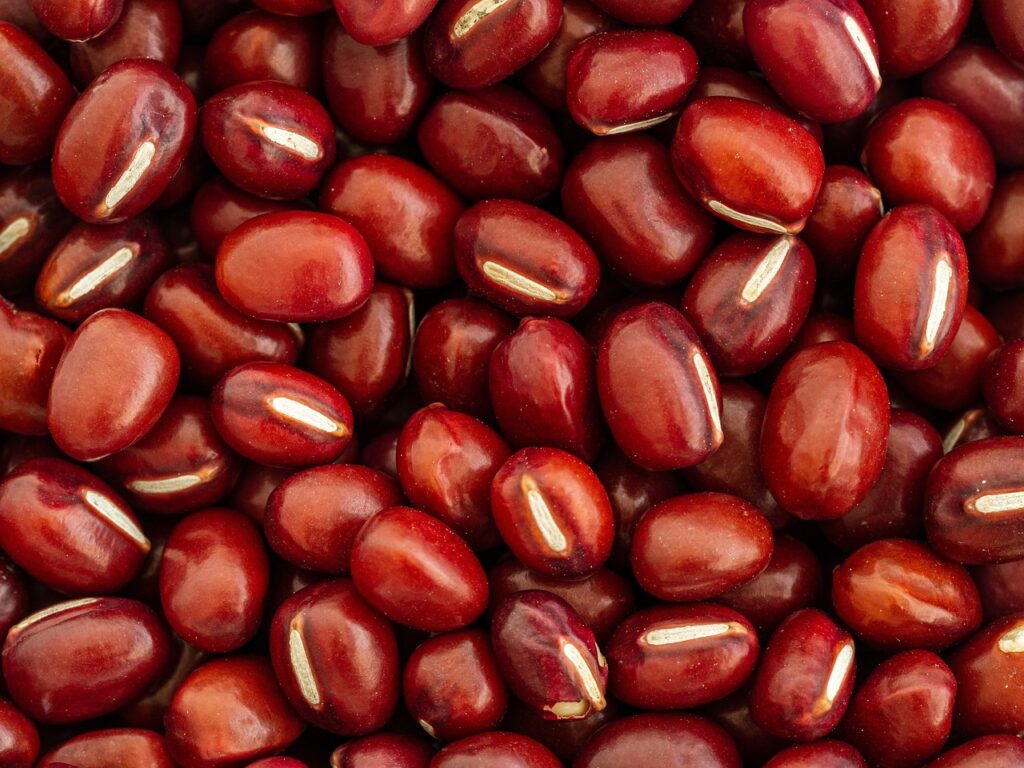
Adzuki
Energetics: PK↓V↑ is slightly rajasic.
Taste/Rasa: Sweet and astringent
Potency/Virya: Cold
Vipaka: Sweet
Actions: Alterative, diuretic, heart tonic.
Indications: Heart, blood, circulation, children, convalescence, edema from malnutrition, painful or burning urination, delayed or difficult menstruation, as a paste with sugar for confections.

Black Gram (Masa)
Energetics: V↓KP↑ .
Taste/Rasa: Sweet and astringent
Potency/Virya: Warm
Vipaka: Sweet
Actions: Nutritive, demulcent, aphrodisiac, nervine, tonic, galactagogue.
Indications: The most strengthening bean, diarrhea, dysentery, indigestion, hemorrhoids, arthritis, paralysis, liver disorders, cystitis, rheumatism. Increases ojas, semen, and breast milk. Used externally – Plaster for arthritis/joint pain, diarrhea, gastritis.
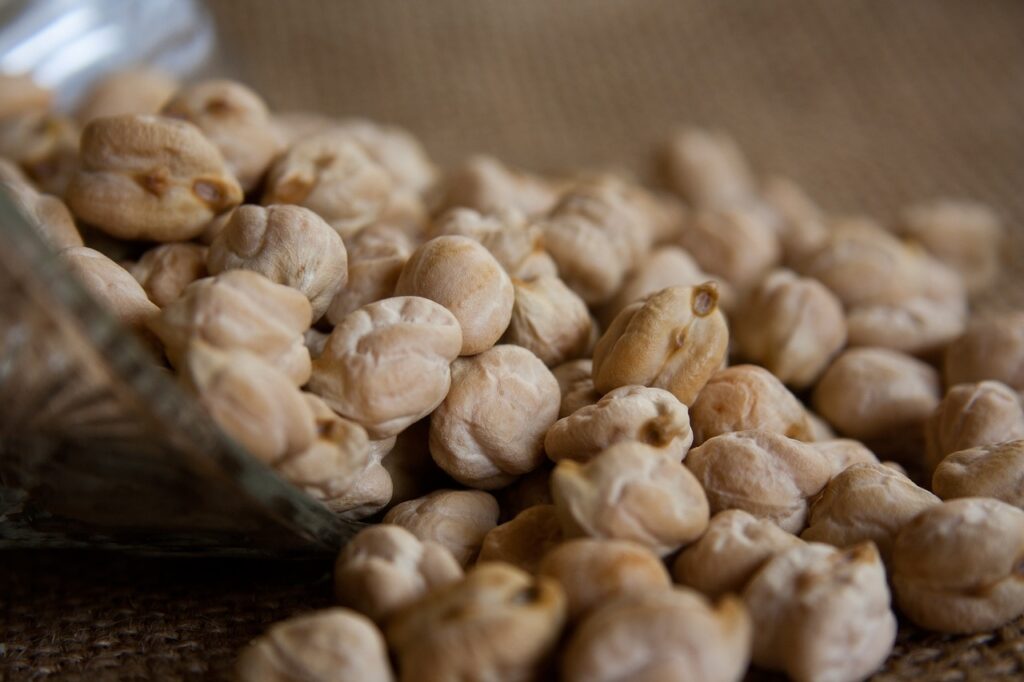
Chickpea/Garbanzo (Canaka)
Energetics: PK↓V↑
Taste/Rasa: Sweet and astringent
Potency/Virya: Cold
Vipaka: Sweet
Actions: Nutritive, aphrodisiac, diuretic, astringent.
Indications: Strengthening, increases reproductive tissues, debility, and the brain. As humus, it is easier to digest. Roasted- relieves gas, urine retention, or excess. Contains calcium, iron, potassium, vitamin A.
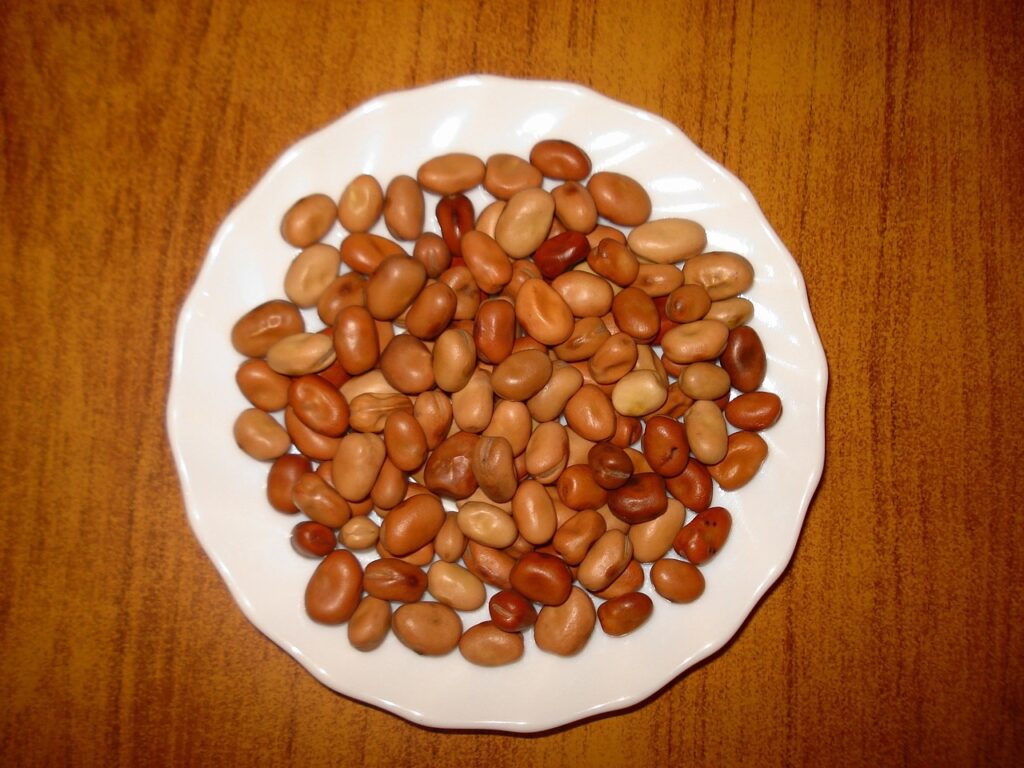
Fava/Broad (Bakla)
Energetics: PK↓V↑↑
Taste/Rasa: Sweet and astringent
Potency/Virya: Cold
Vipaka: Sweet
Indications: Not used as food because some get toxic reactions. Contains calcium, protein, iron, B vitamins.
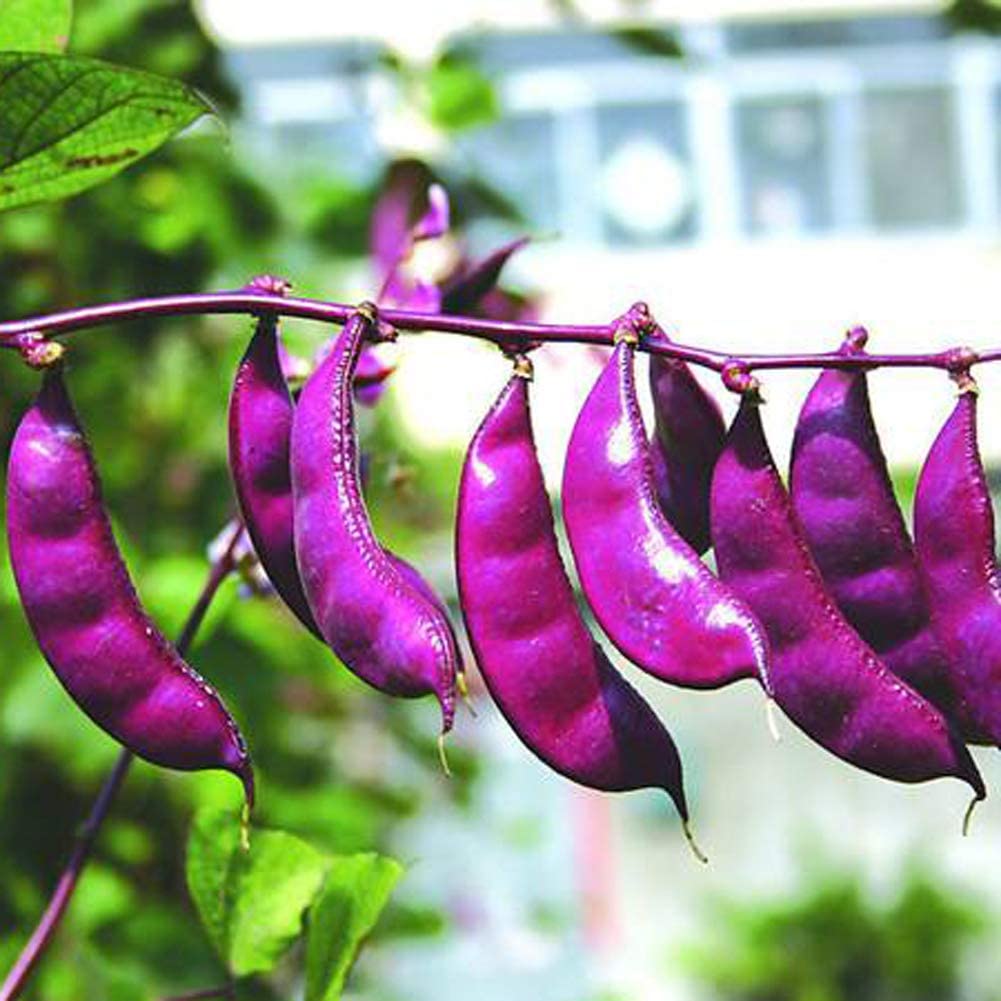
Flat Bean/Hyacinth bean (Simbi)
Energetics: KP↓V↑
Taste/Rasa: Sweet and astringent
Potency/Virya: Cold
Vipaka: Sweet
Actions: Good for phlegm disorders.
Indications: Not good for the eyes, depleting properties.

Kidney/Navy/Pinto (Makustaka; Bakla)
Energetics: PK↓V↑
Taste/Rasa: Sweet and astringent
Potency/Virya: Cold
Vipaka: Sweet
Actions: Nutritive, digestive, aphrodisiac, cardiac.
Indications: Bleeding disorders, bile, fevers, and other Pitta excesses. It is strengthening. Red kidney beans are rich in all nutrients, proteins, and fibers.
Precautions: Hard to digest.
Ayurvedic Diet and Lifestyle Health Coaching
Learn the principles of Ayurvedic nutrition and how to live in sync with nature’s cycles. Create a personal journey of experiencing the power of life. Schedule your complimentary 60 minute consultation today!

Lentils (Masura)
Energetics: PK↓V↑
Taste/Rasa: Sweet and astringent
Potency/Virya: Cold (Red are hot)
Vipaka: Sweet
Actions: Nutritive, strengthening. High in calcium, magnesium, phosphorus, sulfur, vitamin A, proteins. They reduce fat and blood and absorb water.
Indications: Some lentils are hard to digest; though easier if sprouted. There are differing beliefs on the use of red, brown, etc. lentils. They can cause constipation.
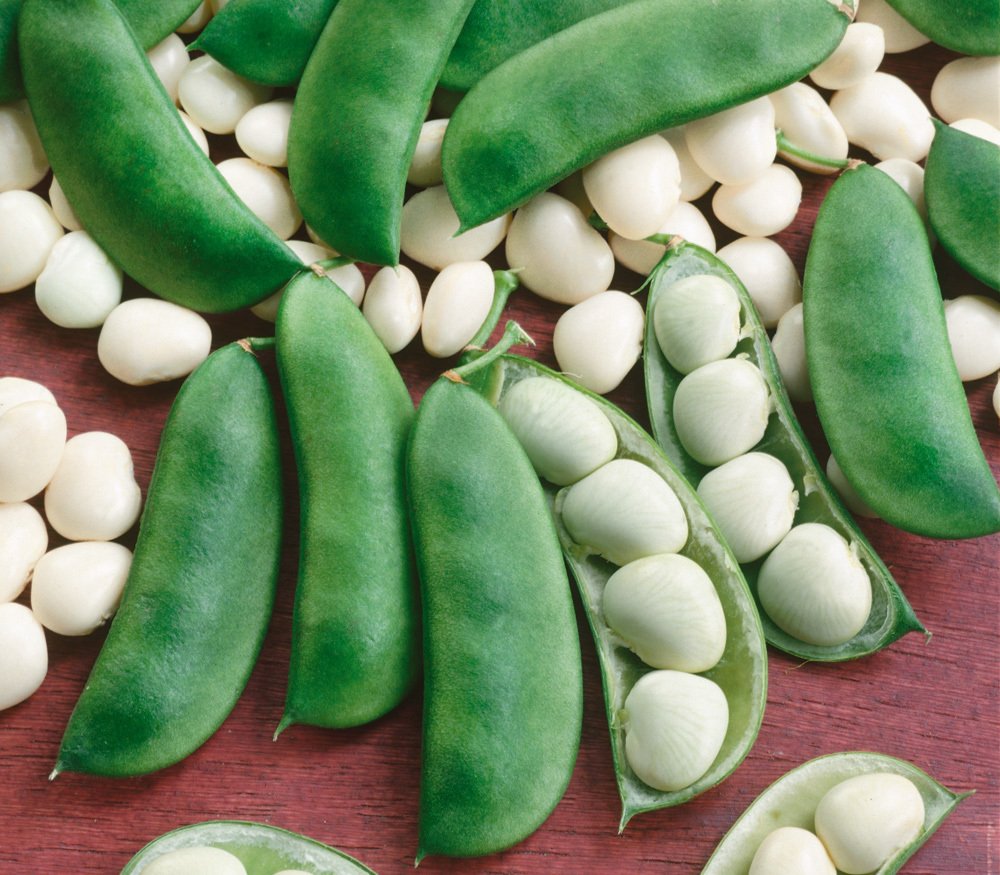
Lima (Cimra)
Energetics: PK↓V↑
Taste/Rasa: Sweet and astringent
Potency/Virya: Cold
Vipaka: Sweet
Indications: Easier to digest, especially if fresh. Good for simple diarrhea (but not for vāta, pitta, or mucus diarrhea). External poultice-cleanses foul ulcers. Rich in potassium, minerals, vitamins, and fibers.
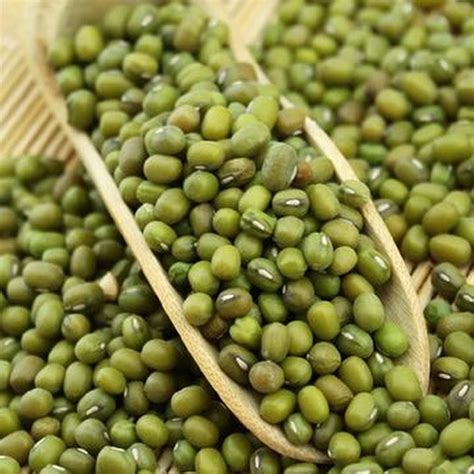
Mung or Green Gram (Mudga)
Energetics: PKV = Sattvic
Taste/Rasa: Sweet and astringent
Potency/Virya: Cold
Vipaka: Pungent
Actions: Refrigerant, antipyretic, alterative, hemostatic. Very nutritious and wholesome.
Indications: Pitta disorders, summer food, convalescence from febrile or infectious diseases (as Khicaḍī-see basmati rice), relieves thirst during fevers, febrile disease, liver, drug, smoking, or alcohol detoxification, cancer, enlarged liver or spleen, bleeding. Tea-high fevers or heat stroke. External paste – burns, sores, swelling, inflamed joints, draws out toxins, swollen breasts, mastitis, and breast cancer. It is sometimes called “mung dal”.
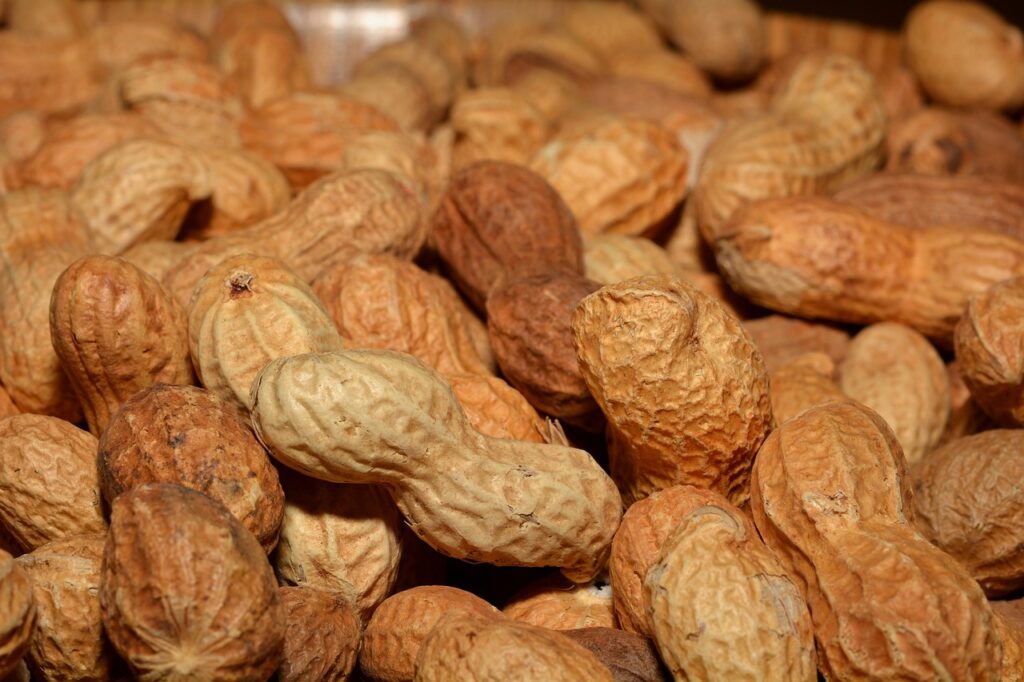
Peanuts (Bhucanaka)
Energetics: K↓PV↑
Taste/Rasa: Sweet and astringent
Potency/Virya: Warm
Vipaka: Sweet
Actions: Oily and often classified as a nut.
Indications: Strengthening, protein, use raw and cooked (not roasted), add honey or cane sugar.
Precautions: Dry roasted V↑↑, peanut butter hard to digest K↑.
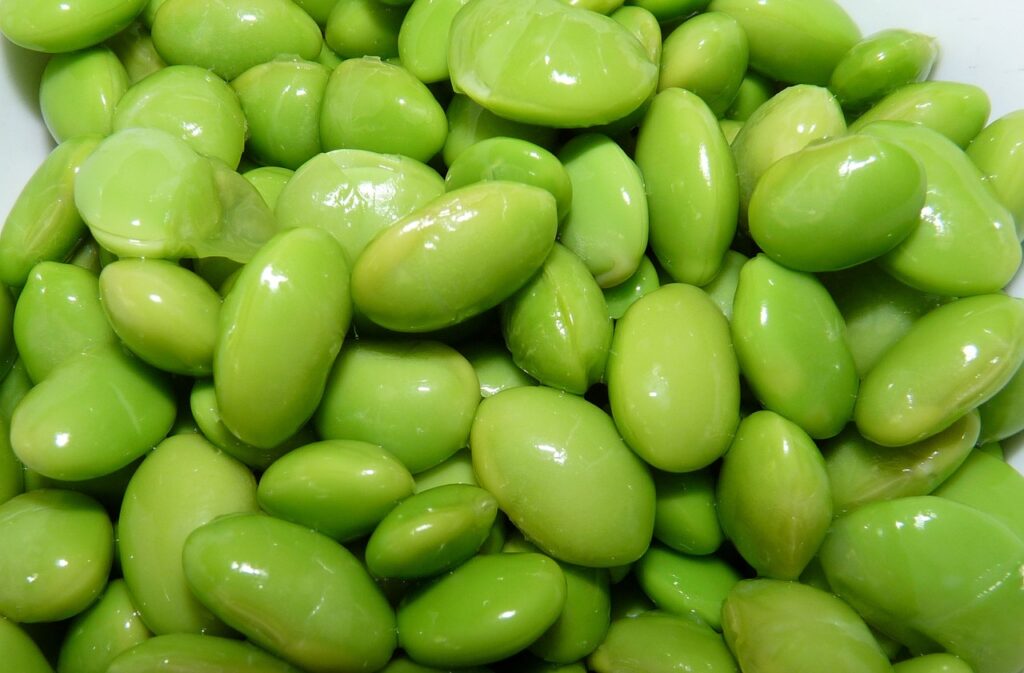
Soy/Tofu (Bhatwan)
Energetics: PK↓V↑ (soy is rajasic)
Rasa: Sweet and astringent
Potency/Virya: Cool
Vipaka: Sweet
Actions: Easier to digest as tofu (Sattvic)
Indications: Tofu after febrile disease, as milk for kapha or āma, lung infections, lymph with fever; taken with Khicaḍī VPK= Highest protein content of the bean family. Tofu is rich in calcium and potassium. It helps with female hormone balance.
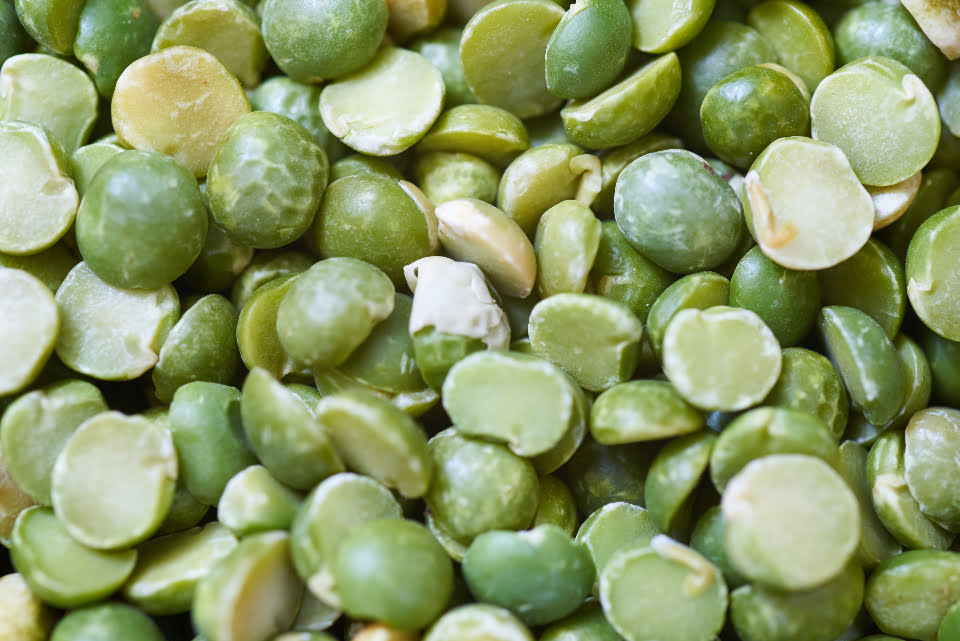
Split Peas
Energetics: PK↓V↑
Taste/Rasa: Sweet and astringent
Potency/Virya: Cool
Vipaka: Sweet
Actions: Binding stool
Indications: Diarrhea
Precautions: Hard to digest, better as soup.


